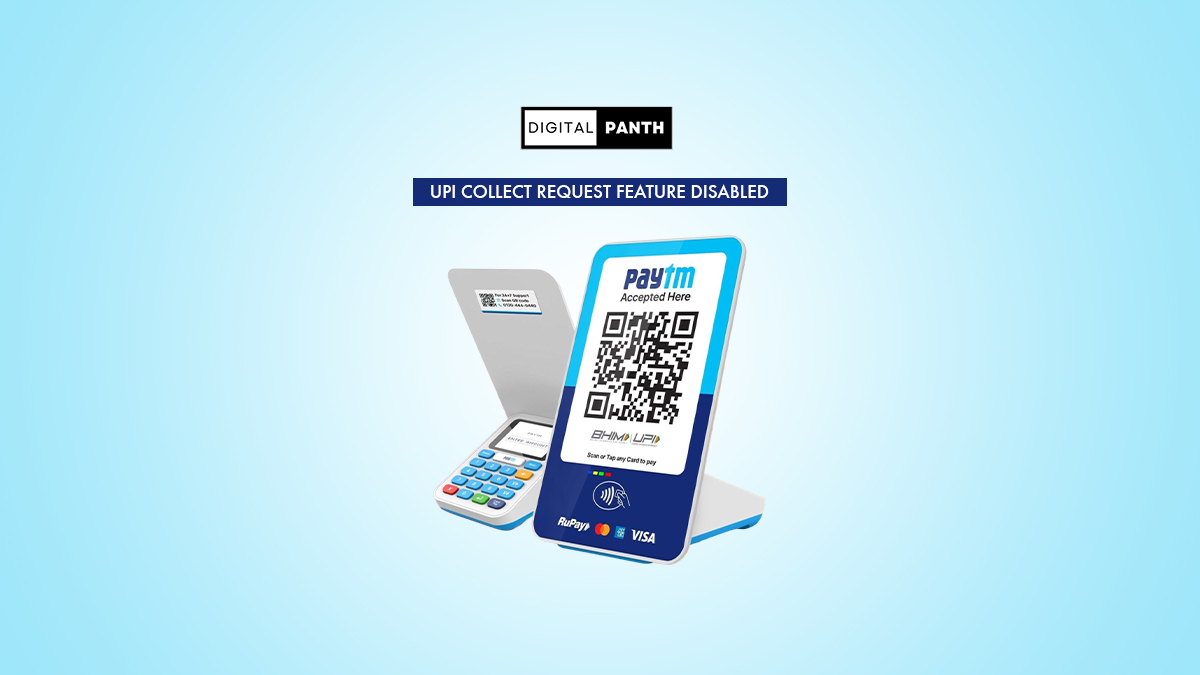The digital payments environment in India has experienced a revolutionary shift, with the Unified Payments Interface (UPI) acting as a backbone for instant money transfers. However, as UPI became more prevalent, its features also began to attract fraudsters to exploit the features and loopholes at the expense of everyday users.
To reduce the risk, the National Payments Corporation of India (NPCI) put into effect a critical change that began on October 1, 2025 — eliminating the peer-to-peer (P2P) “Collect Request” feature, also known as pull transactions, from all major payment applications, including Google Pay, PhonePe, and Paytm.
What is the UPI Collect Request Feature?
Before the October 1, 2025, date, users could issue a “Collect Request” or pull a transaction to any UPI user to prompt them to pay the requested amount. For example, after going out to dinner with several friends, one individual could issue the rest of their friends a collective request to split the bill; each individual could approve or reject the money transfer request.
While effective and time-saving, pull transactions put users at tremendous risk. Fraudsters often sent those who did not know better dangerous or unsolicited money requests that the victim would approve without thinking twice, resulting in a direct debit from the victim’s account.
What Has Changed Since October 1, 2025?
The new rule from NPCI explicitly disables the P2P Collect Request feature for all standard UPI users.
- No user can send or receive a P2P “Collect Request” on UPI apps.
- All requests for money between peers must now be managed outside the UPI infrastructure, such as by messaging reminders.
- Only direct “Push Transactions”— where the sender initiates and authorizes the payment are now possible for peer-to-peer transfers.
This change aims to eliminate the risk associated with pull transactions and allow only user-initiated money movements, which reduces fraud significantly.
Why Make This Change?
The change was primarily made for user protection. According to NPCI and a variety of banks, scammers increasingly exploited the Collect Request feature to trick users into sending money. There were many instances of people sending money after accidentally approving a Collect Request, thinking it was a legitimate refund, bill payment, or another action, only to realize they had just given their money away to a fraudster. With this rule, the only type of transaction that can be completed is a user-jp payment; you can no longer pull or request money directly.
Impacts on everyday users
Every day, UPI users will typically continue to send and receive the money they already send and receive with one-off payments using UPI IDs, QR codes, or account numbers. The only people impacted by the change are users who relied on Collect Requests to transfer money – the feature was commonly used for splitting bills, sharing expenses or informal reminders. This will now require a different form of communication, such as asking someone to simply transfer money directly.
Key Usability Impacts –
- No accidental approvals of fraudulent requests.
- A complete and beholden decision to make a payment.
- Puts full control of payments in the sender’s hands.
- No effect on push transactions, merchant payments, or QR code payments—they work as before.
What Remains Unchanged?
- “Send Money” (Push Transaction): Users can continue to send money directly by entering UPI ID, mobile number, scanning a QR code, or linking bank accounts.
- Merchant Collect Requests: Businesses and billers can still send customer payment requests because these are considered less risky and usually involve additional verification.
- QR Code Payments: Payments via QR code methods remain unchanged.
Practical Tips for UPI Users
- Communicate payment requests through messages or calls, and ask the receiver to make a direct transfer.
- Remain vigilant and do not approve any suspicious or unsolicited requests from unknown sources, even though P2P pulls are discontinued.
- Regularly update UPI and banking apps to the latest versions to ensure optimal security features.
- Understand the difference between merchant and personal collect requests—users may still receive legitimate payment requests from trusted companies.
Fraud Prevention and Future Digital Banking
This move by NPCI demonstrates a clear intent to enhance security as digital payments grow. India’s UPI has over 400 million users; even a small loophole can impact millions. Stopping the misuse of collect requests is designed to protect existing users and boost confidence for new digital consumers.
Fraudsters are often quick to adapt, so it is crucial for authorities and payment providers to proactively identify risks and revise regulations as needed. The UPI ecosystem is constantly evolving, and rules may continue to change to keep pace with emerging threats.
UPI Features Before and After October 1, 2025
| Feature | Before October 1, 2025 | After October 1, 2025 |
| P2P Collect Request (Pull) | Enabled | Disabled for regular users |
| “Send Money” (Push Transaction) | Enabled | Enabled |
| Merchant Collect Request | Enabled | Enabled |
| QR Code Payments | Enabled | Enabled |
Conclusion
The stoppage of the P2P collect request feature since October 1, 2025, has made UPI more secure and less vulnerable to fraud. Direct and transparent transfers are now the norm. For users, the most significant shift is losing the ability to send friend money requests, but the stronger safeguards against scams outweigh this minor inconvenience. Regular UPI users should adapt by initiating payments directly, updating their apps, and verifying any transfer before completing it.
Frequently Asked Questions
After October 1, users must message or call their friends to transfer their share directly via “Send Money”; the collect request shortcut is no longer available.
Peer-to-peer money requests (pull) are disabled. Only merchant collect requests are allowed; users must always verify the sender before responding.
Yes, these are still allowed with checks in place. Always make sure the merchant or biller is genuine.
No, the restrictions are only for peer-to-peer transactions. Merchant-initiated collect requests remain functional.
Disclaimer: The information in this article is based on official NPCI updates and publicly available data as of October 2025. It is intended for general awareness and should not be treated as financial or legal advice. Readers are advised to verify details through official NPCI or bank communications before making any financial decisions.

